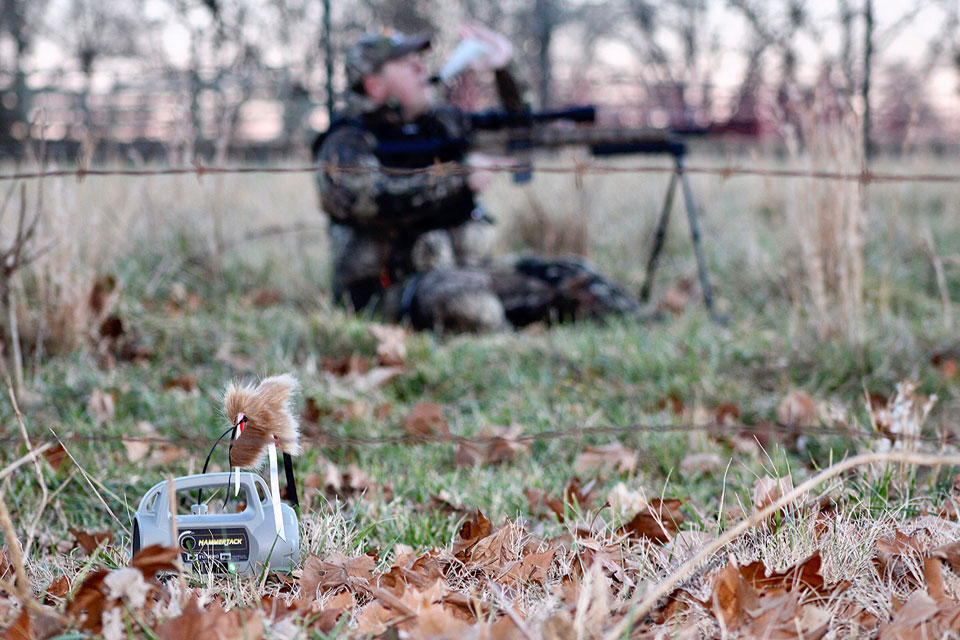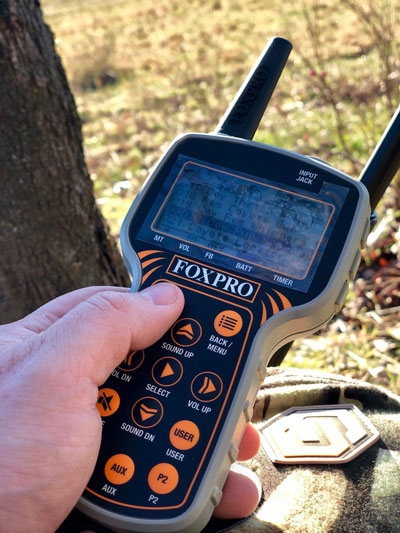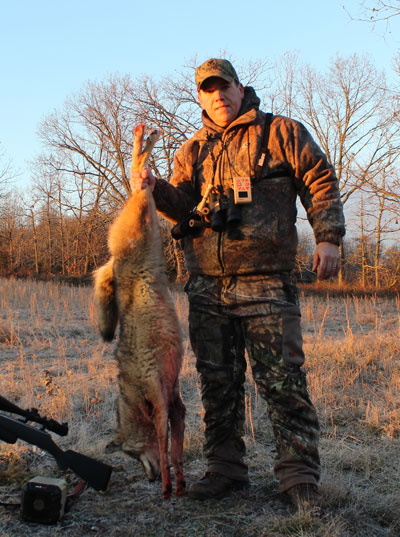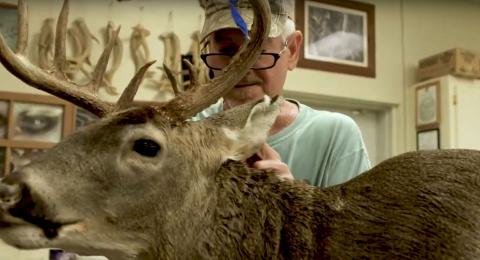Heath Wood

As humans, it is common practice to make excuses when we fail. One of the best excuses that predator hunters tend to make when they are unsuccessful is that the coyotes get too much pressure, which in turn makes them harder to call in. Too much pressure can sometimes be the case, yet most of the time, it boils down to the fact that there simply isn’t as good of a population of coyotes as one would believe there to be.
A few years ago, I was fortunate enough to be able to go on my first predator hunt with an outfitter in western Oklahoma. During the 3-day hunt, I learned the difference between hunting a high population of coyotes in a specific area compared to hunting where there are several coyotes just not all on the same property. During those few days we were able to call in several different coyotes each day, never hunting the same area, yet still staying on the same property. This was an uncommon occurrence for me as I was born and raised in southern Missouri where there are several coyotes. However, when hunting 20,000 acres, one has to get permission from 30 different people because landowners only own an average of 500 to 1000 acres per farm. My previous hunts compared to my hunt with the western outfitter, in which we had access to 30,000 acres that were all joined together with only three landowners, improved our success rate for coyotes per stand dramatically.
After my outfitter experience, I began realizing that I had better success rates where there was more coyote sign, meaning there are coyotes living in the area. This is also when I began distinguishing a true over-hunted, or high-pressure area compared to a simple bad spot. The best way to determine a high-pressured area is when calling in areas that are known to have a population of predators due to finding sign such as tracks, scat or visually seeing them when in the area, yet experience no results of response to a call. The next tip sounds simple, but if one is seeing other hunters in the area on a consistent basis, it is a sign that the area is probably going to be highly pressured. However, this does not mean that coyotes can’t be called in these areas. If one will step out of the normal routine, they will realize success is still an option.
 Change Sounds
Change Sounds
One of the most recognizable signs that an area is over pressured is that of coyotes becoming call shy. This is when one may see the coyote respond, however they won’t commit the rest of the way in. I have hunted areas that have been over hunted so badly that I could have sworn that when playing a rabbit in distress sound that every coyote in the area jumped in a truck together and got out of dodge. The rabbit in distress is probably the most successful call to ever be used while calling coyotes. At the same time, it is also the most overused call. When calling in areas as described, one needs to take advantage of modern electronic callers that have an array of different sounds available. Play sounds that coyotes rarely hear from hunters, sounds such as Nutty Nuthatch, Titmouse Tantrum, Magpies, as well as adding crow sounds along with one's distress sounds. Hunters can also mix these unique sounds with a few coyote vocals to bring in even the weariest coyotes into range.
Territorial Instincts
The majority of predator hunters focus on sounds that pertain to food sources. The sounds include animals such as rabbits, birds, rodents and mice. Even though it has been discussed many times the last couple of years, if one will use more coyote vocals, they will see a higher success rate. This is especially true when hunting high-pressured areas. If one will focus on a coyote’s territorial instincts instead of their stomachs, they will see better results. A coyote is the most territorial animal that is hunted. When they think another coyote has slipped into their territory to steal food or steal other coyotes for breeding purposes, they become defensive, thus making them come to investigate more than they would with a normal distress call made by most hunters. Some of my favorite sounds to use in this type of scenario are lone howls, interrogation howls, challenge howls, whimpers, and pup in distress. Using a combination of hand calls along with my FoxPro Shockwave electronic caller positioned several yards away, makes for a great way to duplicate actual coyotes responding to each other, in turn making other coyotes in the area curious and anxious to see what is taking place.
Spread it Out
 Do not over hunt an area. Over hunting an area is one of the biggest debates among hunters. Some stray away from hunting a specific area too often, while others swear that their success if due to the fact that they stay close to the same area. Either way, the object is to prevent over pressuring coyotes. In southern Missouri, spreading out is a hard feat to accomplish; instead, one is narrowed down to hunting several small properties in a surrounding area. We don’t have the luxury of being able to hunt large chunks of land, because it is not available. However, I have learned over the years that one can be more successful if he or she will spread it out. Take turns hunting different land, spacing it out several weeks in between hunting. This allows areas to become calm, keeping animals on a normal routine. Less pressured coyotes are by far less challenging to call in when hunting. Take note that I said less challenging, not easy.
Do not over hunt an area. Over hunting an area is one of the biggest debates among hunters. Some stray away from hunting a specific area too often, while others swear that their success if due to the fact that they stay close to the same area. Either way, the object is to prevent over pressuring coyotes. In southern Missouri, spreading out is a hard feat to accomplish; instead, one is narrowed down to hunting several small properties in a surrounding area. We don’t have the luxury of being able to hunt large chunks of land, because it is not available. However, I have learned over the years that one can be more successful if he or she will spread it out. Take turns hunting different land, spacing it out several weeks in between hunting. This allows areas to become calm, keeping animals on a normal routine. Less pressured coyotes are by far less challenging to call in when hunting. Take note that I said less challenging, not easy.
Scout More
For almost every species of animals that can be hunted, scouting is going to be a key in being more successful. The same can be said when dealing with pressured coyotes. If one will spend time before hunting and scout the areas they will be calling, the chances of over pressuring coyotes decreases. This is because if one knows exactly where coyotes live, on a day-to-day basis, they can then go into a specific area without disturbing the unwanted areas. This allows for the chance to hunt the same piece of property multiple times in the same season. Find where coyotes spend the most time by finding tracks, droppings and den areas as well as visually spotting coyotes, then sneak into that area and hunt.
Having a so called “think outside of the box attitude” when calling coyotes can be very beneficial in putting more fur in the shed during one season. By taking notice to details as mentioned above, the task of calling hard-to-hunt and over-pressured coyotes into shooting range becomes an easier challenge that is achieved by becoming a more versatile hunter.



























